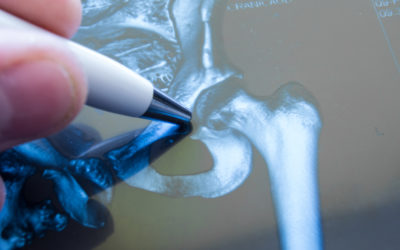For most people, hip pain starts as a small ache and gets worse over time as their hip joint keeps breaking down. Your doctor may treat your hip without surgery depending on how much pain you’re in and how much your damaged hip joint is interfering with your daily life. This is so that you can put off the surgery as long as possible. An anterior hip replacement will be your next best option if these nonsurgical treatments do not help with your symptoms.
Total hip replacement surgery is thought to be one of the most important steps forward in orthopedics. People whose joints have been damaged by trauma or degenerative diseases like hip arthritis can move again and feel less pain. This blog will review the anterior approach, which is one way to do a total hip replacement.
What is an Anterior Hip Replacement?
Direct anterior hip replacement is a type of surgery that is minimally invasive. With this method, a 3–4-inch cut is made on the front of the hip. This allows replacing the joint by moving the muscles along their natural tissue planes without separating tendons. After a hip replacement, this approach often leads to a faster recovery, less pain, and more normal function. When a direct anterior hip replacement is done, the tendons are not cut away from the hip. This means that hip precautions are usually not needed, and patients can get back to their normal daily activities quickly after surgery and have a lower chance of dislocating their hip joint after surgery.
What are the Benefits of Anterior Hip Replacement?
The rate of “success” for hip replacement is close to 95%. This success is defined as improving the patient’s pain, function, and quality of life.
When compared to traditional hip replacement methods, the main benefits of direct anterior hip replacement include:
- Faster recovery
- Less pain right after the surgery
- More normal gait mechanics, or how one walks or runs after surgery
- A more stable artificial hip without the need for hip precautions
There are several different types of hip replacement surgery, the most important thing for technical success is to put the hip replacement parts in the best place to improve the overall symptoms the patient was experiencing before surgery.
What is the Difference Between Anterior and Posterior Hip Replacements?
During both an anterior and posterior hip replacement, the damaged head of the femur and any damaged cartilage is taken out of the socket. The bone is then fitted with a metal or ceramic ball, and a new metal socket is placed. A plastic spacer makes it possible for the new ball and socket to move smoothly. But there are a few things that make these two ways of doing hip replacement surgery different from each other including:
1. Point of entry
In posterior hip replacement surgery, a ten- to twelve-inch cut is made on the outside of the patient’s buttocks at the back of the hip or on the side of the hip. When a person has anterior hip replacement surgery, a four- to five-inch-long cut is made on the front of their hip
2. Muscle detachment
In the posterior approach to hip replacement, the surgeon has to cut through big muscles to get to the hip. Since there aren’t as many muscles in the front of a person’s hip, a surgeon doesn’t have to cut through them when doing anterior hip replacement surgery
3. Hospital stay
Patients who have a posterior hip replacement can expect to stay in the hospital for three to ten days. With the anterior approach, on the other hand, they can go home in two to four days
4. Recovery time
Because the posterior method involves cutting the muscles around the hip joint and giving them time to heal, it usually takes two to four months to get better. With the anterior approach, the muscles around the hip joint are not cut, so recovery only takes two to eight weeks
5. Precautions after surgery
When a patient gets a posterior hip replacement, they must take a set of very careful steps for up to 12 weeks to avoid getting hurt again. Since there is less chance of complications with the anterior approach, there are no special steps to take or a long list of things to avoid doing
Both anterior and posterior hip replacement surgery have the same goal. Both surgeries relieve hip pain and restore function so people can resume their daily activities without pain.
Anterior Hip Replacement Recovery
Pain
Direct anterior hip replacements may cause less pain in the first few days after surgery than traditional hip replacements. This depends on pre-surgery pain, tolerance, pain medication, and more.
Medications
Medication given after surgery is done so on a set schedule. This means that regardless of pain, an anti-inflammatory, Tylenol, and a nerve painkiller are given. This lets pain be “treated before it happens”. After surgery, patients may need painkillers for 2–6 weeks.
Physical Therapy
After a direct anterior total hip replacement, you don’t always have to do physical therapy. This surgery does not cut muscles or tendons, so no special strengthening is needed. After surgery, people are strongly encouraged to walk, which is usually the only physical therapy they need.
However, when you have arthritis, your hip joint may feel stiff. This stiffness usually goes away after arthritis and bone spurs are gone, but some people’s hip muscles tighten or scar. Formal physical therapy may be a good idea for these patients to get the best results.
Are you struggling with hip pain and arthritis? Considering a hip replacement? Find our nearest location to you or give us a call at (865)690-4861, we would love to help you relieve your pain.




